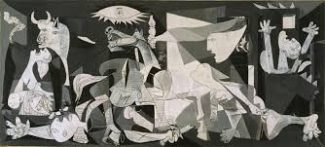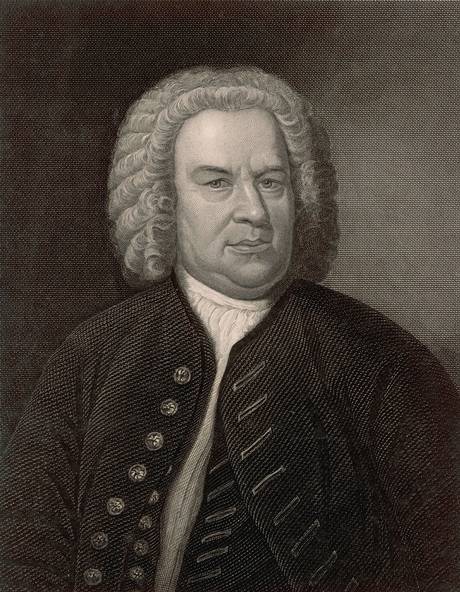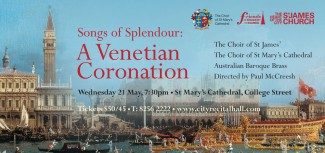Artists as leaders – celebrating the role of heroic antiheroes

Written by Philip Pogson
“Art proves it value by still mattering to people who have been deprived of every other freedom.” – Clive James
Leadership’s unlikely candidates
In 1995 painter Arthur Boyd was named Australian of the Year for his “extraordinary contribution to Australian art and his great generosity to the Australian nation.” Particularly admired in the UK and Australia, Boyd is so celebrated that one of his tapestries is on display in the Great Hall of Parliament House, Canberra. In 1993 he gifted to the nation, several thousand artworks from his personal collection. He also donated to the Australian people his property, Bundanon, on the Shoalhaven River near Nowra, several hours south of Sydney. Bundanon is managed by Bundanon Trust as a not for profit artists’ retreat complete with accommodation, galleries and concert venues. Those who visit cannot but be inspired by the scenery, the artworks on display and the generosity of the artist in signing away something that must have been precious to him and is family.
Boyd was an unlikely figure to make Australian of the Year. He was not given to public speeches or pronouncements. As I remember it, he kept a low profile during his 12-month term. If he were alive today, I imagine he would not contemplate presenting a TEDx talk about art and would be even less inclined to opine on leadership. But Boyd did lead in and through what he did best – making art. In the 1950s, his “Love, Marriage and Death of a Half-Caste” series of paintings was inspired by, and pointed to, the plight of Australian aboriginals who until 1967 were not considered to be Australian citizens. Unfortunately to my mind, artists like Boyd are rarely featured in leadership development programs or cited in the broader community as examples to emulate. This serves to highlight shortcomings in the way we think about leadership in our society.
Expanding our concepts of leadership
Outside the close-knit world of the arts that, to be honest, many people find impenetrable, there is little written about the role artists play as leaders in our community. Perhaps this is because few artists run major enterprises, employ large numbers of staff or lead a country. Frustratingly, there is no universally agreed best way to be an artist: no three easy steps to success. Some artists are hermits and avoid the limelight, others insist on loudly pointing out societal flaws – even those that embarrass and shame us. Some have a positive view of the world that is uplifting whilst others put forward a vision that is bleak and difficult to engage with, let alone comprehend. At times, writers such as Tasmanian novelist Richard Flannagan do become influential opinion leaders, as did Irish rockers, U2, but such examples tend to be the exception. Most, but not all artists, simply do not fit the heroic leadership model that so dominates and limits our thinking. They are more often anti-heroes, even “anti-leaders”. Chris Lowney, who trained as a Jesuit priest before taking up a global career in merchant banking with J.P Morgan, makes the following observations about the cultural stereotypes of leaders and leadership that dominate Western Culture. These include:
- A leader is a person in charge – the one running a company, heading a government, coaching a team or captaining troops.
- Leadership produces direct results – the most effective leadership behaviour produces immediate results.
- Leadership is about defining moments – the decisive battle, the championship game, the new business strategy.
Few individuals fit this somewhat heroic model of leadership. As Lowney points out, most of us never motivate an army of subordinates, few of us have defining leadership moments worthy of note and even fewer everyday citizens can point to direct, positive outcomes of their leadership actions beyond that of immediate family, our workplace and friends. In summary, the model of leadership we most widely study and celebrate in our culture is one that is unachievable by the majority of people. In this sense, the humble artist is more like the humble citizen than we might imagine. That is, for the most part artists go about their lives with limited hope of career and financial success, let alone the influence and power these bring. Like the rest of us they simply do what they do as best they can and hope to have a positive impact.
Can we learn about leadership from artists?
Perhaps, due to the fact that I originally trained as a classical musician, I have been inspired by art and artists since my mid-teens. I still read a poem or two every day and co-own a music promotion business that also records and releases CDs. Over the years I’ve continued to read and research much about art and artists. As I look at my bookcase, biographies of composers such as Bach, Messiaen, Shostakovich, Benjamin Britten and the Australian, Peter Sculthorpe, rest alongside books about poets Ted Hughes, TS Eliot and Les Murray. There is also a history of the famed Boyd family, of which Arthur Boyd was a member, a biography of Margaret Ollie, the painter and one of the Russian novelist, Tolstoy. These tomes are juxtaposed with books on generals such as Dwight Eisenhower and John Monash, the physicist Robert Oppenheimer and political leaders Ronald Reagan, Margaret Thatcher, Russian cold war leader Nikita Krushchev, Hitler and Angela Merkel. An uneasy mix some would say! But you don’t have to agree with a politician to want to understand them and their motivations; you don’t have to love war to learn about leadership from a general; you don’t need to be a scientist to be interested in how science works. Equally, wishing to comprehend how evil pervades a civilised nation does not make you a Nazi. You don’t even have to be a fan of art to be open to learning from artists.
What follows is a short summary of what I have learned about leadership from a lifetime of being directly and vicariously involved with artists and art. My musings are diffuse but so be it: life is best lived through applying a limited number of principles to the many day-to-day actions and options available to us. The writer Amor Towles put this idea beautifully in his novel, “A Gentlemen in Moscow”: “We must all eventually adopt a fundamental framework, some reasonably coherent system of causes and effects that will help us make sense not simply of momentous events, but of all the little actions and interactions that constitute our daily lives”.
One such framework follows.
A. Live a purposeful life
Living a purposeful life is a key part of what it is to be human. I believe we are hardwired to seek meaning, yet, we often avoid the task and with good reason: it’s hard. Artists find meaning, joy and even solace in what they do and create. Yet, being a working artist can be lonely, poorly rewarded and unrecognised. As an artist your ego and sense of worth are always under threat: one bad review, a poor performance or yet another funding rejection can be devastating. Months or years of patient labour may have gone into the very artistic outputs that are negatively or ambivalently received. On the upside, artists get to spend their time doing what they believe they’ve been put on earth to do. They focus their energies on that which they love, and everything else comes second – for better or worse. In contrast, so many professionals have commented to me, particularly once they hit their late 40s and into their 50s, that they wished they had done something more purposeful or meaningful with their lives rather than just being an “x”, whatever “x” is. It is often the case that the career alternative to the profession or career they chose was potentially more fulfilling but riskier and with a less clear pathway to success. Art is not the only way to construct a meaningful life, but it is a pointer to what makes life meaningful. This leads to the next two points in my framework.
B. Take a long-term perspective
Artists can help us learn what it is to have a long-term perspective on the decades-long arc that constitutes a human life – in developed countries at least. It takes many years as a writer, painter, performer or composer to create a body of significant work. In this sense, most artists are the opposite of the much-vaunted heroic leader who produces immediate results. My wife, a classical musician, said to me recently that she hopes when she dies people may continue to play her recordings which represent 35 years of her life. The road to building a body of work is littered, however, with failure: much artistic output that is inferior is by necessity abandoned or even destroyed. Artists must also be open to a change of direction or focus in order to get better at what they do. I am certain it is tempting as an artist to continue to produce what people like and buy – even as the very artistic outputs that attract public interest become tired or second-rate.
What it takes to obtain mastery of an art form gives perspective to the twists and turns of the human life course. Orchestral conductors are said to reach their peak in their 60s, 70s and 80s, just when most of us have retired, or are preparing to retire; Picasso painted into his 90s and the guitarist, Segovia, was performing into his tenth decade; the painter Margaret Ollie was similarly a late bloomer. Writer Clive James produced some of his finest poetry in the last years of his life while being treated for a what would be a fatal illness. To this list I could also add the Rolling Stones who show no sign of ceasing to roll although aged well into their 70s.
We all need to make short-term decisions, but these decisions are best viewed from the perspective of our life-long goals, the reasons for being we believe make life meaningful. Put another way, we benefit from viewing our lives through the lens of the impact we want to make on the world and in the lives of those around us. Most of us will at best make relatively modest contributions to global well-being. Our focus will be more localised – a school, sporting team, a particular community group, our family, our role in the public service or place of employment. The practice of art has the potential to teach us that when viewed from the perspective of a life well-lived, each and every contribution we make can be significant and worthy on its own terms.
C. Seek insight and understanding
The pursuit of insight and understanding has the potential create a more profound impact on our lives than simply growing our knowledge and fact base. Similarly, ancient philosophers viewed wisdom as that which is obtained through reflection on knowledge gained and experiences had. Wisdom is thus a (potential) product of age. I do not want to play knowledge and insight/wisdom off against each other but rather to point to the fact that art potentially gives us access to the depths of what it is to be human. Art summarises, and at the same time transcends, the everyday. Shakespeare’s sonnets elevate love in the same way that an Emily Dickinson poem helps us see the mundane of daily life from a new perspective; a simple folk song relating an ancient tragedy brings new insight to a contemporary event; a great novel transports us through time; a challenging art installation puts the boot into our complacency, while coming across an unexpected sculpture in a public park can lift our spirits when we least expect.
The kind of art that has a deep impact comes from a process of reflection and profound exploration of self, society, the natural world and the web of relationships that connect us. Art at its best points to that which is higher and better: the numinous. Again, I don’t wish to drive a wedge between the practice of a constructing a fulfilling day-to-day life, which is pervasive, and the relatively few transformative moments of grand enlightenment we experience: I am advocating for both/and, rather than either/or. We don’t need to be artists to commit ourselves to moving beyond the surface of things and seeking insights as to that which lies beneath.
D. Some artists emerge as conventional, even heroic leaders
Finally, there are artists who lead in more conventional ways. Similarly, some works of art actually change the way we view the world. For example, Picasso’s “Guernica”, although not originally a painting about war, has come to symbolise the horrors of war for millions as has Russian composer Shostakovich’s Leningrad Symphony – written and premiered, as it was, in the shadow of Germany’s WWII invasion of his country and prolonged assault on the city of Leningrad. Across history musicians, actors and writers have stood up to despots, tongue-lashed the community neglect of suffering, drawn attention to the blight of racism and publicised horrors such as the Holocaust and the Gulags. A limited number of artists have also become political leaders: writer Václav Havel, a political dissident under communism, was the last President of Czechoslovakia from 1989 until the dissolution of Czechoslovakia in 1992. He was then the initial President of the Czech Republic from 1993 to 2003. Australian rock singer Peter Garrett entered Federal parliament and rose to the Ministry while the world-famous pianist Ignacy Jan Paderewski became a spokesman for Polish independence and was briefly that nation’s Prime Minister. As Foreign Minister he even signed the Treaty of Versailles at the end of World War I.
In closing, it is worth drawing attention to the power of hope expressed in art. Years after his senseless murder, many are still attracted to John Lennon’s unlikely anthem, “Imagine”. In listening to the song, it is my hope that some, perhaps just a handful, are doing what Lennon hoped they would do: imagining a better world. A few will go on to act on those imaginings…that too is leadership.
Philip Pogson FAICD Director, The Leading Partnership
Philip studied music at Sydney, Sweelinck and Rotterdam Conservatoriums prior to entering management and business. Alongside his music enterprises, Philip is an active company director and Chair and advises boards and leadership teams on strategy and governance.
SoundsLikeSydney©






